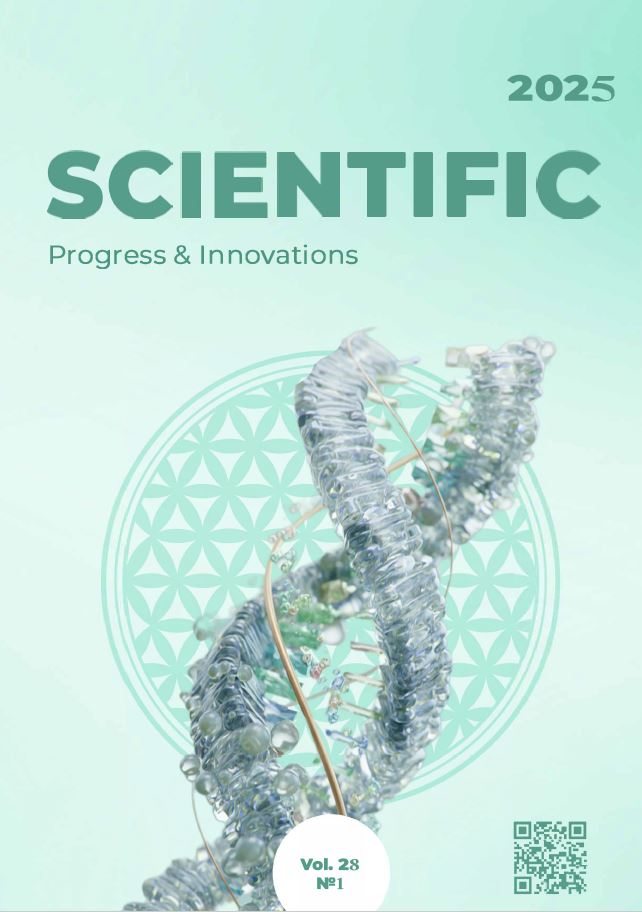Comparative analysis of the rehabilitation potential of cats and dogs in conditions of the animal shelter
DOI:
https://doi.org/10.31210/spi2025.28.01.27Keywords:
veterinary shelter medicine, adaptation, hematological indicators, biochemical indicatorsAbstract
The purpose of this work was to evaluate and compare the rehabilitation potential of cats and dogs and to determine the criteria for their adaptation during a two-month staing in the animal shelter. 29 clinically healthy cats, aged from 4 months to 7 years and 26 dogs, aged from 1 to 8 years, were investigated. 11 biochemical parameters in serum and 12 hematological tests were identified. By the values of leukocytograms were calculated 8 leukocyte indices. According to the results of biochemical studies on the 1-st day of the experiment between groups of cats and dogs significant differences have been established in the level of three indicators: urea, creatinine, inorganic phosphorus (27.3 % of the total number of biochemical tests). On the 30th day there were three indicators: albumins, globulins and urea (27.3 %); On 60 days – only two: globulins and albumins (18.2 %). Within individual groups, concentration of three indicators: total protein, globulins and inorganic phosphorus (27.3 %) was significantly changed from 1 to 60 days. In dogs, accordingly, five indicator were changed: total protein, albumins, globulins, urea and creatinine (45.5 %). According to the results of hematological tests, the 1st day of the experiment between groups of cats and dogs established significant differences of six indicators: hemoglobin concentration, mean corpuscular volume, hematocrit, the number of lymphocytes, segmented neutrophils and band neutrophils (50.0 % of the total number hematological tests); On the 30th day there were three indicators: concentrations of hemoglobin, mean corpuscular volume and hematocrit (25 %); On the 60th day there were five indicators: the number of leukocytes, segmented neutrophils, hemoglobin concentrations, mean corpuscular volume and hematocrit (41.6 %). Significant changes in the level of indicators within individual groups are set in a group of cats, namely: concentrations of leukocytes and segmented neutrophils (16.6 %) and in a group of dogs – the number of leukocytes, segmented neutrophil and band neutrophils, erythrocytes, hemoglobin and hematocrit concentrations (50 %). According to the results of the values of leukocyte indices on the 1st day of the experiment between groups of cats and dogs, there were significant differences of the values of five indices (62.5 %), by 30 and 60 days their number decreased to one (12.5 %). Within individual groups, reliable changes in indices in the amount of three (37.5 %) in a group of cats and four (50 %) in dogs were recorded within 60 days. Thus, as the term of adaptation of cats and dogs to the new environmental conditions, the differences of the number and level of biochemical and hematological indicators, as well as leukocyte indices between groups, decreased. The results indicate the greater rehabilitation potential of dogs compared to cats and more vulnerability of cats to stress due to changes in the conditions of detention. On the 60 days of the experiment, the level of laboratory parameters in both groups of animals is within the relevant reference standards. Thus, for complete rehabilitation of dogs and cats, 60 daily keeping in an animal shelter is sufficient.
Downloads
Published
How to Cite
Issue
Section
License
Copyright (c) 2025 Scientific Progress & Innovations

This work is licensed under a Creative Commons Attribution 4.0 International License.

 Creative Commons Attribution 4.0 International Licens
Creative Commons Attribution 4.0 International Licens